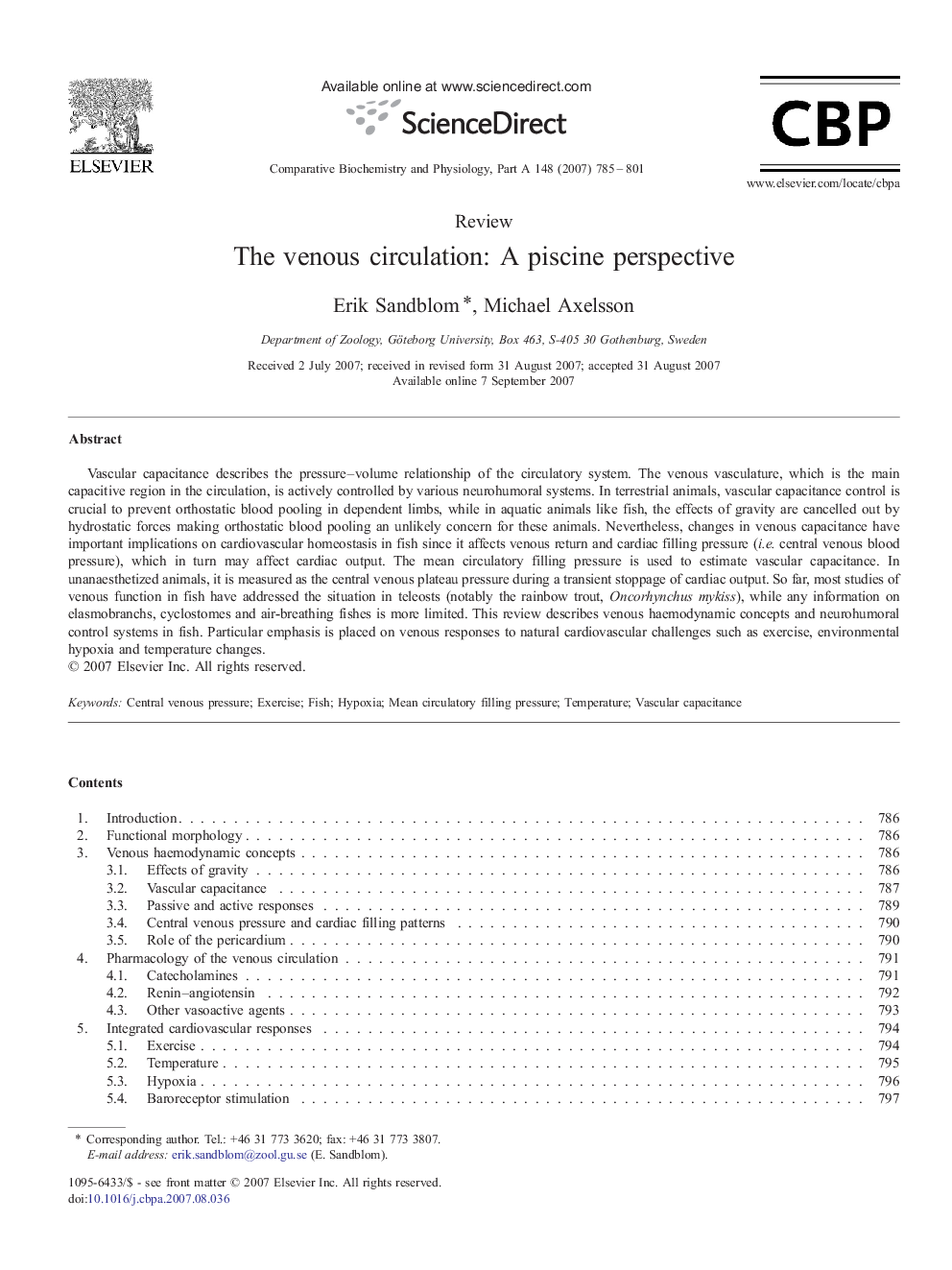| Article ID | Journal | Published Year | Pages | File Type |
|---|---|---|---|---|
| 1974071 | Comparative Biochemistry and Physiology Part A: Molecular & Integrative Physiology | 2007 | 17 Pages |
Vascular capacitance describes the pressure–volume relationship of the circulatory system. The venous vasculature, which is the main capacitive region in the circulation, is actively controlled by various neurohumoral systems. In terrestrial animals, vascular capacitance control is crucial to prevent orthostatic blood pooling in dependent limbs, while in aquatic animals like fish, the effects of gravity are cancelled out by hydrostatic forces making orthostatic blood pooling an unlikely concern for these animals. Nevertheless, changes in venous capacitance have important implications on cardiovascular homeostasis in fish since it affects venous return and cardiac filling pressure (i.e. central venous blood pressure), which in turn may affect cardiac output. The mean circulatory filling pressure is used to estimate vascular capacitance. In unanaesthetized animals, it is measured as the central venous plateau pressure during a transient stoppage of cardiac output. So far, most studies of venous function in fish have addressed the situation in teleosts (notably the rainbow trout, Oncorhynchus mykiss), while any information on elasmobranchs, cyclostomes and air-breathing fishes is more limited. This review describes venous haemodynamic concepts and neurohumoral control systems in fish. Particular emphasis is placed on venous responses to natural cardiovascular challenges such as exercise, environmental hypoxia and temperature changes.
